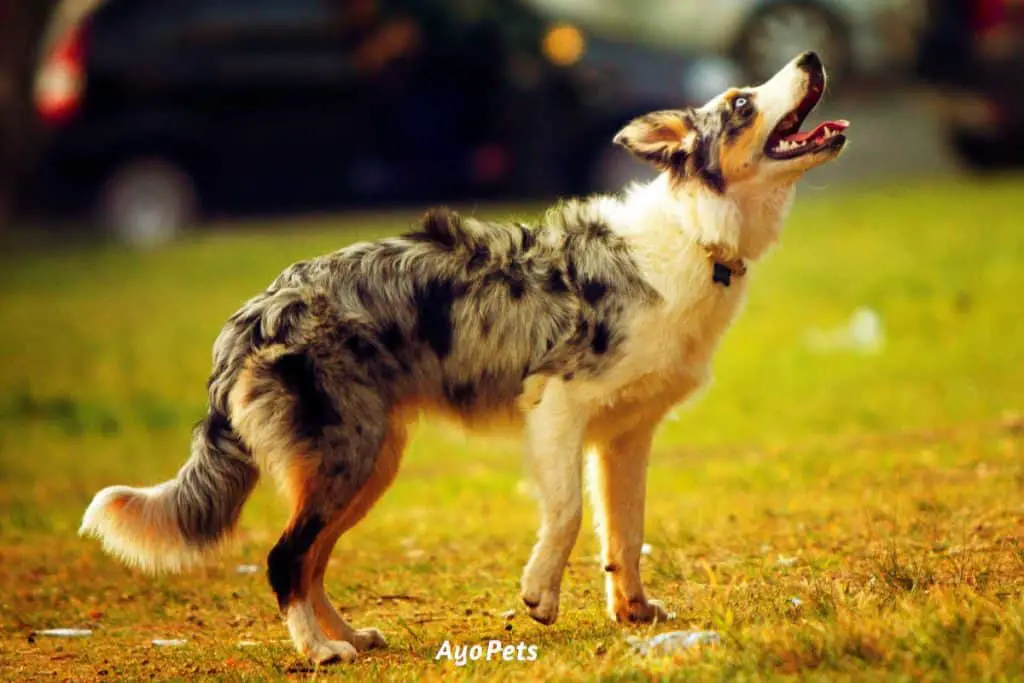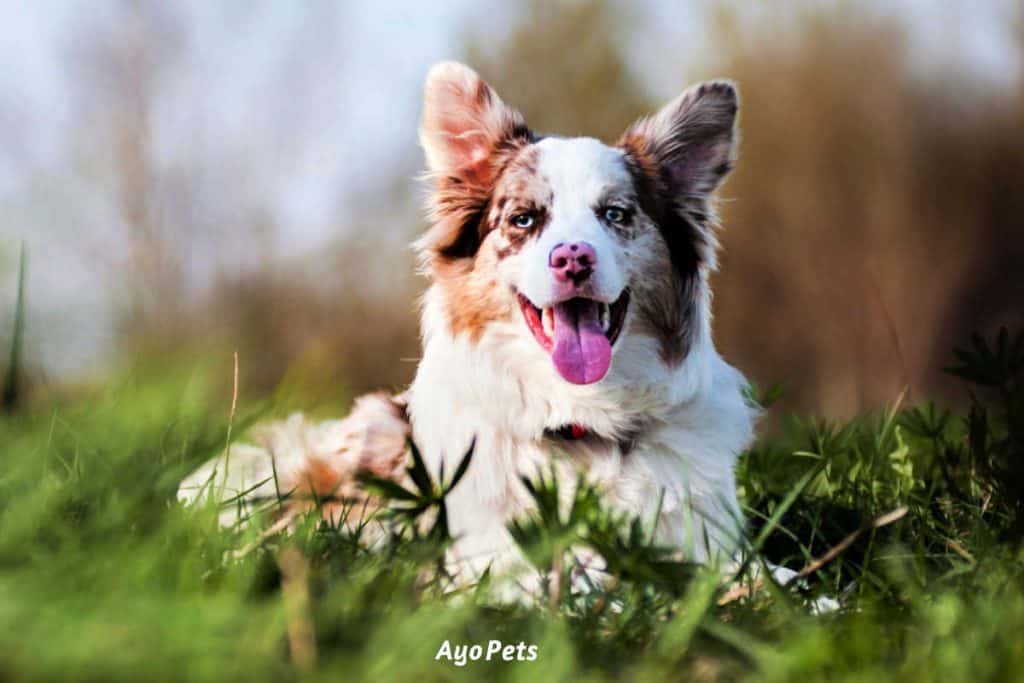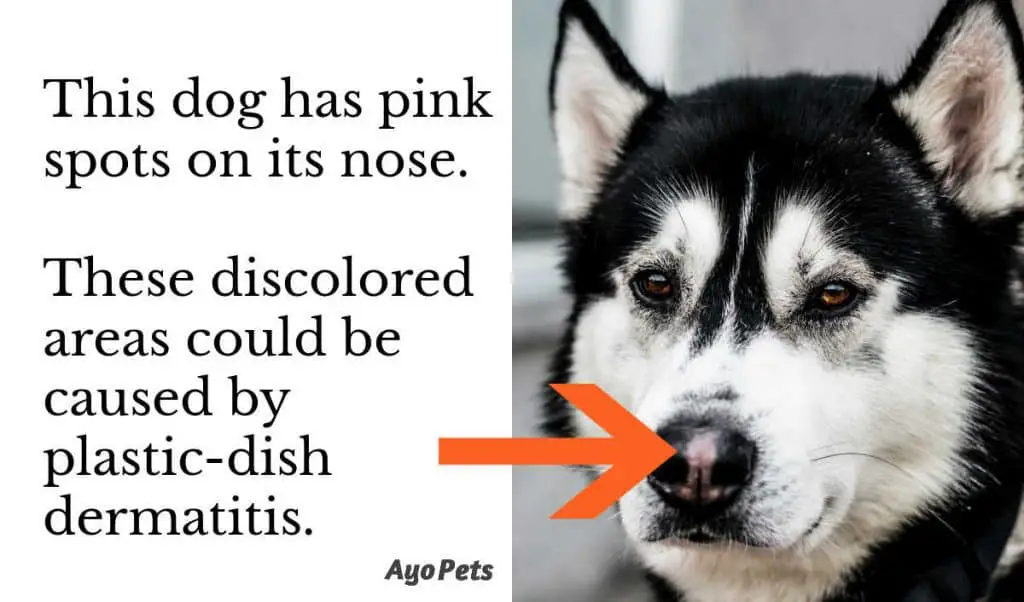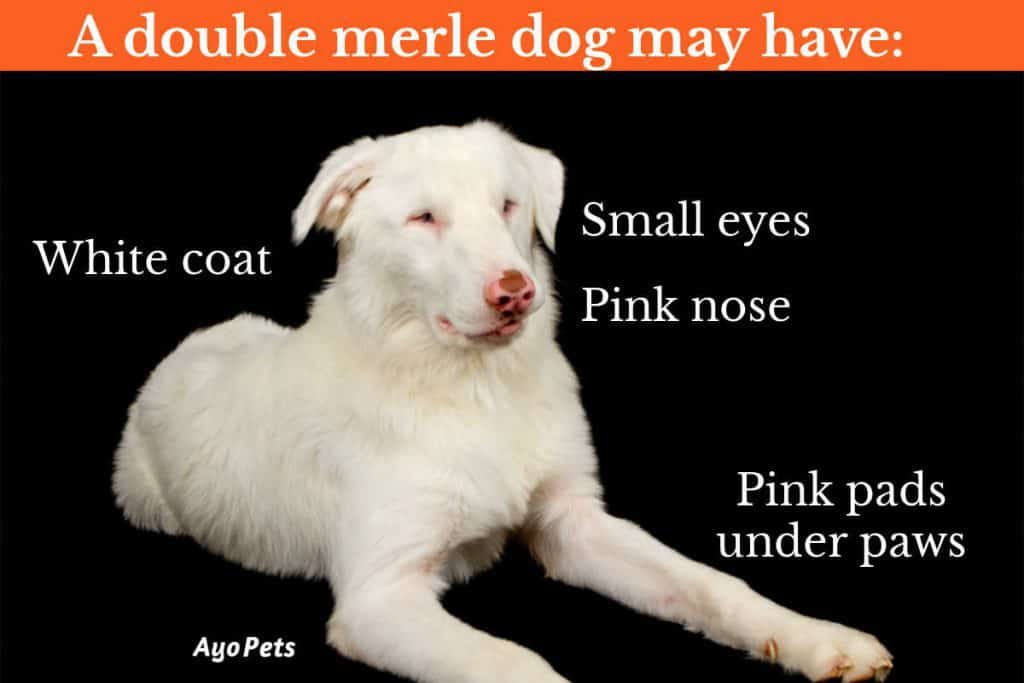I recently saw a merle border collie chasing a ball happily on my local dog beach. I started chatting to the owner and she was telling me about the breed and why she chose to rescue a merle and the risks involved with being a double merle, which her collie wasn’t.
I asked her what a double merle is and she explained that:
A double merle dog has a mother with the merle gene and a father with the merle gene, which gave the puppy a double merle gene. The merle gene gives the dog a mottled coloring, but a double merle lacks color pigment and can be all white or have very little coloring on the coat.
Not all dogs born to mothers and fathers that carry the merle gene will be double merles. But breeding merles together is unpredictable and not a healthy way to produce litters.
To fully understand what a double merle dog is, we need to understand what a merle dog is, so let’s start there…
PRODUCTS MENTIONED IN THIS POST (Amazon affiliate links)
What is a merle dog?

Genes are made of DNA and pass traits from parent dogs to their puppies. For example, a larger-than-normal mother and father could pass on the ‘big’ gene to their puppies, who have a greater chance of being bigger than normal too when they grow up.
Breeders use physical and personality traits in adult dogs to breed puppies that are more likely to have the traits of their parents. Over time, a dog breed changes the more these traits are bred into the breed.
Merle is a gene in dogs that influences their coloring or pigmentation. Experts think that this gene started in border collies, but it has been bred into many other breeds (there’s a full list later in this post).
If a dog carries the merle gene, the gene often shows up in the patterns on the dog’s coat, but not always so you can’t be sure if a dog carries the merle gene or not.
A merle coat has patches of mottled darker colors splashed across lighter versions of the same color. A merle puppy’s coat can become darker as it matures into an adult.
Many people love this merle coloring and want to have a merle dog, which is why breeders keep on breeding dogs with this gene.
A merle dog often has blue or different-colored eyes that are light in color, such as blue, green, or light brown.
A merle dog is not the same as a double-merle dog, but they might be confused because they can look quite alike.
What is a double merle dog?

When any dog with the merle gene has puppies, this merle gene can be passed on to all, some, or none of its puppies.
But when a female dog and a male dog that both have the merle gene have puppies together, one-quarter of their puppies (1 out of every 4) will be what is called ‘double merles’.
We can think of it like this:
Merle mother + merle father = puppy + puppy + puppy + double merle puppy
This statistic is fairly consistent and isn’t affected by the dog breed or how much ‘merle’ you can see in the parent dogs.
The problem with breeding two merles is that they give birth to double merles. These double merle puppies may have a tough time in life because of health issues that come with the double merle gene.
It’s very irresponsible to breed a merle with a merle. If your dog is a merle, you can consider sterilizing it or keep it away from other merles.
How to identify a double merle dog
Double merle dogs may have coats that are completely white in color as the double merle gene affects their ability to make pigment, but the dog may have small patches of mottled or merle colors in its coat.
Double merles may have problems with their hearing or sight, and can be completely deaf or blind.
You can do a DNA test to see if the dog has the merle gene or what breeds are in the dog, if the dog is adopted or a rescue. A DNA test can be done through Paw Print Genetics or Embark, to find the merle gene.
See more info on the new Embark coat color testing here.
How do I know if my dog is a double merle?
It can be very difficult to tell if your dog is a merle or a double merle dog.
Many breeds with merle have other genes that cause white in dogs, and this white coloring has nothing to do with the double merle gene.
For example, many Border Collies have a white neck, face, feet and tail tip. And some Collies have fur that’s mostly white but they don’t carry the double merle gene.
Other dogs have so little merle you can hardly tell them apart from non-merles — but they’re still genetically a double merle.
What if your dog is mostly white with merle patches? Is it a double merle? Not necessarily.
If you find even one tiny spot of merle in your dog’s coat, assume that your dog is at least a merle, and perhaps a double merle.
There are only two ways to be sure if your dog is a merle or a double merle:
- Get your dog from a responsible breeder who lets your see your puppy’s parents or photos of the parents. If you see any merle in the parent dogs then you know that your dog probably carries the merle gene and perhaps even the double merle gene
- Give your dog a DNA test to test for the merle gene
There are a few ways to tell if your dog might be a double merle by looking at the dog. Dogs with the double merle gene may be/have:
- All white in color, or have patches of merle/mottled coloring on the top half of their body – their head, back, and base of the tail
- Light-colored paw pads
- Have light blue, green or brown eyes, perhaps even eyes that are different colors
- Have noses that are all or mostly pink in color (not to be confused with plastic dish dermatitis from eating out of a plastic bowl)

- Are deaf or have hearing problems
- Are blind or have problems with their sight and eyes, such as their eyes not looking straight ahead but rather in opposite directions, one looks left and the other looks right (the opposite of being cross-eyed)
Dog breeds that can be merles

The following dog breeds can carry the merle gene and have the merle coloring:
- American Cocker Spaniels
- American Pit Bull Terriers
- American Staffordshire Terriers
- Australian Koolies
- Australian Shepherds
- Beaucerons
- Bergers des Pyrenees
- Border Collies (where the merle gene probably started)
- Cardigan Welsh Corgis
- Catahoula Leopard Dogs
- Chihuahuas
- Dachshunds
- English Springer Spaniels
- French Bulldogs
- German Collies
- Great Danes
- Hungarian Mudi
- Irish Setters
- Labradoodles
- Miniature American Shepherds
- Miniature Australian Shepherds
- Norwegian Hounds
- Old English Sheepdogs
- Pomeranians
- Pyrenean Shepherds
- Rough Collies
- Shetland Sheepdogs
- Weimaraners
- Welsh Sheepdogs
The above list has been adapted, with thanks, from the US National Library of Medicine, White Kisses Great Dane Rescue, and other sources.
Is double merle bad?
Double merle dogs can have health problems when they are born or as they age, such as blindness, deafness, or get cancer from the sun because their skin is light and sensitive, especially if they enjoy lying in the sun as some dogs do (here’s why).
10% of double merles are deaf in one ear and 15% end up deaf in both ears. Eye color does not seem to affect the chances of the double merle dog being deaf.
Sometimes double merle dogs are born with extremely small eyes that don’t work, which is a condition called microphthalmia. Sometimes these eyes need to be removed.

Aside from a higher risk of hearing and sight problems, double merles are very healthy animals. Though again, it’s very irresponsible to breed two merles together because of the health issues that might come through in the double merle puppies.
Double merle life expectancy
Double merle dogs generally live as long as merle dogs or other dogs of their breed, with smaller breeds tending to live longer than bigger breeds overall.
In other words, a double merle dog has the same life expectancy as any other dog of their size and breed, even if it wasn’t a double merle.
Double merles are usually healthy and, if well taken care of, very happy dogs to have as part of your family.






